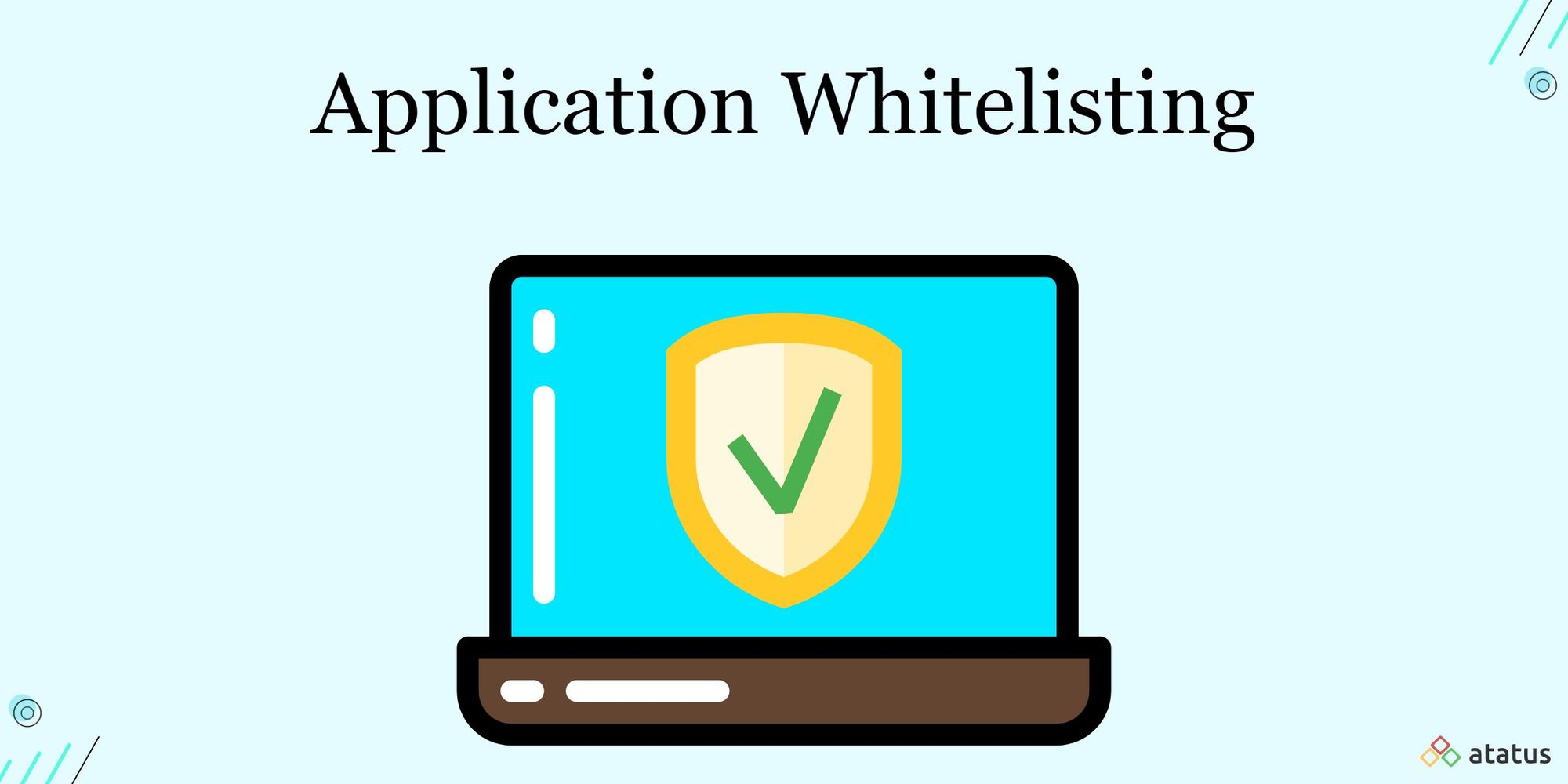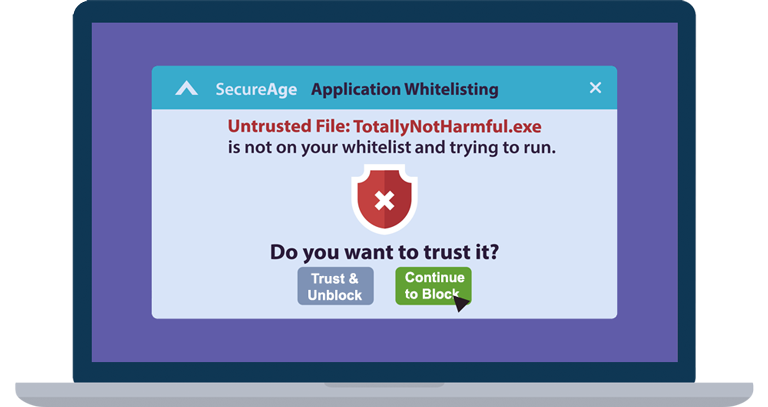Application whitelisting software sets the stage for this enthralling narrative, offering readers a glimpse into a story that is rich in detail, brimming with originality from the outset. In a world where cybersecurity is paramount, understanding how this software works can be a game-changer.
Delving deeper into the intricacies of application whitelisting software reveals a nuanced approach to cybersecurity that prioritizes precision and control over digital landscapes, making it an indispensable tool in safeguarding sensitive data and systems.
Introduction to Application Whitelisting Software
Application whitelisting software is a cybersecurity technology that allows only approved applications to run on a system while blocking all others. Its primary purpose is to enhance security by preventing unauthorized or malicious software from executing on a network or device.
Examples of Popular Application Whitelisting Software
- Microsoft AppLocker: A built-in feature in Windows operating systems that allows administrators to control which applications can run on a system.
- Carbon Black Protection: A comprehensive security solution that includes application whitelisting capabilities to protect endpoints from advanced threats.
- Ivanti Application Control: Offers application whitelisting features along with other security controls to safeguard endpoints from cyber attacks.
Benefits of Using Application Whitelisting Software for Cybersecurity
- Enhanced Security: By only allowing approved applications to run, whitelisting software minimizes the risk of malware infections and unauthorized software installations.
- Improved Control: Administrators can have better control over the software environment, reducing the attack surface and ensuring compliance with security policies.
- Reduced Maintenance: With whitelisting in place, there is less need for constant monitoring and updating of antivirus definitions, leading to more efficient security management.
- Prevention of Zero-day Attacks: Application whitelisting can prevent the execution of unknown or untrusted applications, thwarting zero-day attacks that exploit vulnerabilities in software.
How Application Whitelisting Software Works

Application whitelisting software works by allowing only approved applications to run on a system, providing a proactive approach to security. Here’s how it determines which applications are allowed to run:
Difference Between Application Whitelisting and Blacklisting
Application whitelisting and blacklisting are two different approaches to managing software on a system. Whitelisting focuses on allowing only approved applications to run, while blacklisting blocks known malicious applications. Whitelisting is considered more secure as it only allows trusted applications to execute.
Criteria Used in Application Whitelisting Decisions
- File Hashes: Application whitelisting software can use file hashes to verify the integrity of an application before allowing it to run.
- Digital Signatures: Applications signed by trusted entities are often allowed to run without issue.
- File Paths: Whitelisting software can restrict applications based on their file paths, preventing unauthorized programs from executing.
- Behavior Analysis: Some whitelisting solutions analyze the behavior of applications to determine if they are safe to run.
Features of Application Whitelisting Software

Application whitelisting software comes with a variety of key features that help organizations secure their systems and prevent unauthorized applications from running.
Key Features:
- Centralized Control: Application whitelisting software allows IT administrators to centrally manage and control the list of approved applications across all endpoints.
- Application Inventory: It provides a detailed inventory of all applications installed on the network, making it easier to identify unauthorized software.
- Policy Enforcement: The software enforces security policies by only allowing approved applications to run, thereby reducing the attack surface.
- Whitelist Updates: Regular updates to the whitelist ensure that new applications are added and unauthorized ones are blocked promptly.
Preventing Unauthorized Applications:
Application whitelisting software helps in preventing unauthorized applications by creating a list of approved software that can run on a system. Any application not on the whitelist is automatically blocked from execution, reducing the risk of malware infections and unauthorized access.
Comparison of Approaches:
| Approach | Description |
|---|---|
| Hash-based Whitelisting | Uses cryptographic hashes to uniquely identify approved applications, ensuring only authorized software is executed. |
| Certificate-based Whitelisting | Relies on digital certificates to verify the authenticity of applications, allowing only signed software to run. |
| Path-based Whitelisting | Restricts applications based on their file path, allowing only programs from specified directories to execute. |
Implementation and Best Practices
Implementing application whitelisting software in an organization requires careful planning and execution to ensure its effectiveness. Here are some best practices to consider:
Best Practices for Implementation:, Application whitelisting software
- Start by identifying critical systems and applications that need to be whitelisted to minimize disruptions.
- Involve key stakeholders from IT, security, and business units to gain buy-in and support for the implementation.
- Develop a comprehensive whitelist policy outlining approved applications, users, and processes.
- Conduct thorough testing and pilot phases to validate the whitelist rules before full deployment.
- Regularly update and review the whitelist to adapt to changes in the IT environment and new applications.
Tips for Managing and Maintaining Whitelisting Rules:
- Establish a centralized management system to easily monitor and update whitelist rules across all endpoints.
- Implement role-based access control to limit who can modify whitelist rules to prevent unauthorized changes.
- Regularly audit and review whitelist logs to identify any unauthorized applications or policy violations.
- Automate rule updates and deployments to streamline the management process and ensure consistency.
- Provide ongoing training and awareness programs for employees to understand the importance of whitelisting and compliance.
Challenges Organizations May Face:
- Resistance to change from employees accustomed to unrestricted access to applications.
- Complexity in managing a large number of whitelist rules and ensuring they align with business needs.
- Compatibility issues with legacy applications that may not be easily whitelisted or require special configurations.
- Balancing security requirements with user productivity to avoid over-restrictive policies that hinder business operations.
Comparison with Other Security Measures: Application Whitelisting Software

When comparing application whitelisting software with other security measures such as antivirus software and firewalls, it’s important to understand how each one functions and the specific benefits they offer.
Complementing Traditional Security Measures
Application whitelisting software complements traditional security measures like antivirus software and firewalls by providing an additional layer of protection. While antivirus software and firewalls focus on detecting and blocking malicious code or unauthorized access based on known signatures or behaviors, application whitelisting takes a different approach.
- Antivirus software: Scans files and programs for known malware signatures and behavior patterns to identify and block threats.
- Firewalls: Monitor and control incoming and outgoing network traffic to prevent unauthorized access and data breaches.
- Application Whitelisting Software: Allows only approved applications to run on a system, effectively blocking any unauthorized or unknown programs from executing.
Scenarios where Application Whitelisting Software is More Effective
There are scenarios where application whitelisting software proves to be more effective than other security solutions:
- Zero-day Attacks:Application whitelisting can prevent zero-day attacks where unknown malware exploits vulnerabilities before antivirus software can detect them.
- Insider Threats:By restricting the execution of applications to a predefined whitelist, organizations can mitigate the risk of insider threats and unauthorized software installations.
- Advanced Persistent Threats (APTs):APTs are sophisticated attacks that can evade traditional security measures. Application whitelisting adds an extra barrier against such persistent threats.
Final Wrap-Up
In conclusion, application whitelisting software emerges as a crucial asset in the realm of cybersecurity, offering organizations a proactive means to protect their digital assets with unparalleled accuracy and efficiency. By embracing this technology, businesses can fortify their defenses and stay one step ahead in the ever-evolving landscape of cyber threats.
Question & Answer Hub
How does application whitelisting software differ from blacklisting?
Application whitelisting focuses on allowing specific approved applications to run, while blacklisting blocks known malicious applications. Whitelisting offers a proactive security approach.
What are some common challenges in implementing application whitelisting software?
Organizations may face resistance from users accustomed to more flexibility, initial configuration complexities, and ensuring constant updates to the whitelist.
Can application whitelisting software replace traditional antivirus programs?
While application whitelisting enhances security, it’s not meant to replace antivirus software. Both serve different purposes and are often used together for comprehensive protection.
